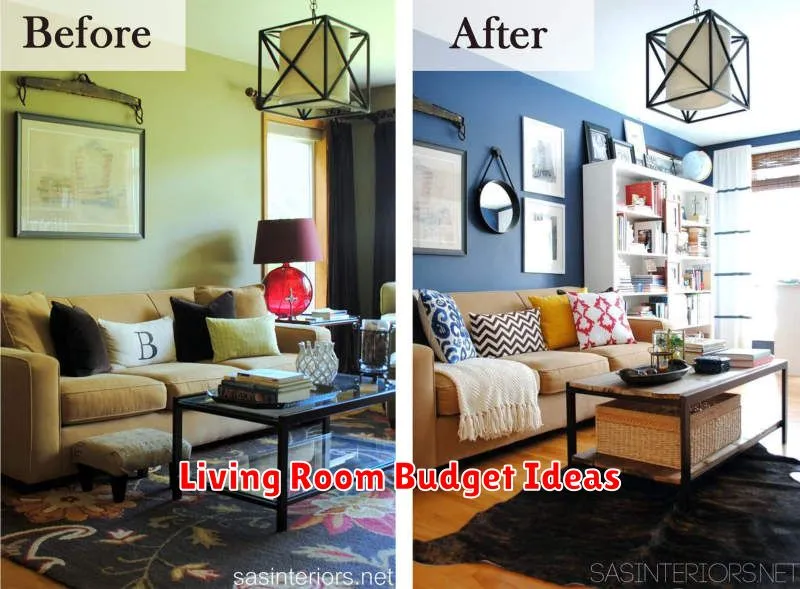Transform your living room into a stylish and inviting space without breaking the bank! This article unveils 10 budget-friendly living room makeovers, offering practical and affordable tips to revamp your home’s heart. Discover clever DIY projects, ingenious decorating ideas, and savvy shopping strategies to achieve a stunning living room transformation on a limited budget. Learn how to maximize your space, create a cozy atmosphere, and refresh your décor with minimal cost. Prepare to be inspired by these simple yet effective budget makeover ideas that will leave your living room looking refreshed and rejuvenated!
Upcycle Old Furniture
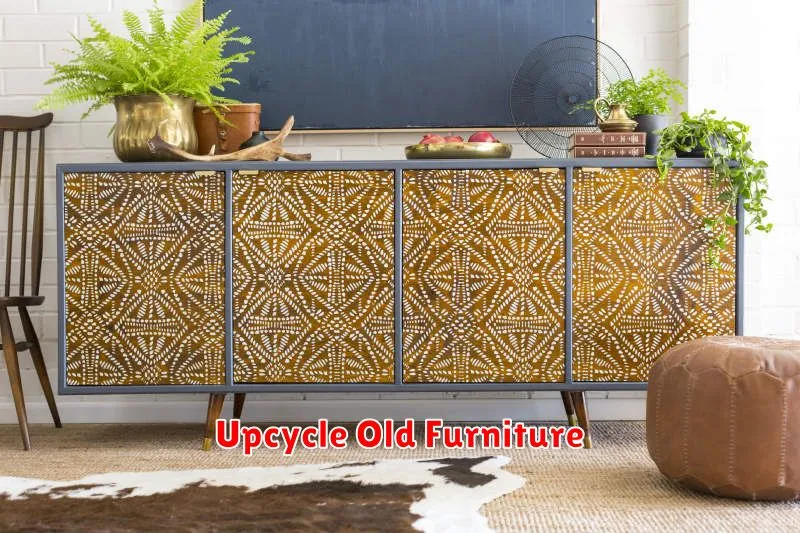
Upcycling old furniture offers a sustainable and cost-effective alternative to purchasing new pieces. It allows for the creative reuse of existing materials, reducing waste and minimizing environmental impact. This process not only benefits the planet but also provides a unique opportunity to personalize your home decor.
The possibilities are virtually endless. A worn-out dresser can be transformed into a stylish media console with a fresh coat of paint and new hardware. An old table can be given new life with a unique decoupage technique or a vibrant stained finish. Outdated chairs can be reupholstered with contemporary fabrics, instantly updating their look and feel. Even seemingly irreparable pieces can often be salvaged and repurposed into entirely new items.
Before beginning any upcycling project, it’s crucial to carefully assess the condition of the furniture. Identify any necessary repairs, such as wood restoration or structural reinforcement. Cleaning and preparing the surface properly is essential for ensuring a successful outcome. Choosing the right paint, stain, or fabric is equally important, as this will significantly impact the final aesthetic.
Numerous resources are available to guide you through the upcycling process. Online tutorials, books, and even local workshops offer valuable insights and techniques for different projects. Don’t be afraid to experiment and let your creativity guide you. The beauty of upcycling lies in the ability to create something unique and personal, reflecting your own style and preferences.
Ultimately, upcycling old furniture is a rewarding endeavor that combines environmental responsibility with creative expression. By giving new life to discarded pieces, you contribute to a more sustainable future while enhancing the beauty and character of your living space.
DIY Wall Art
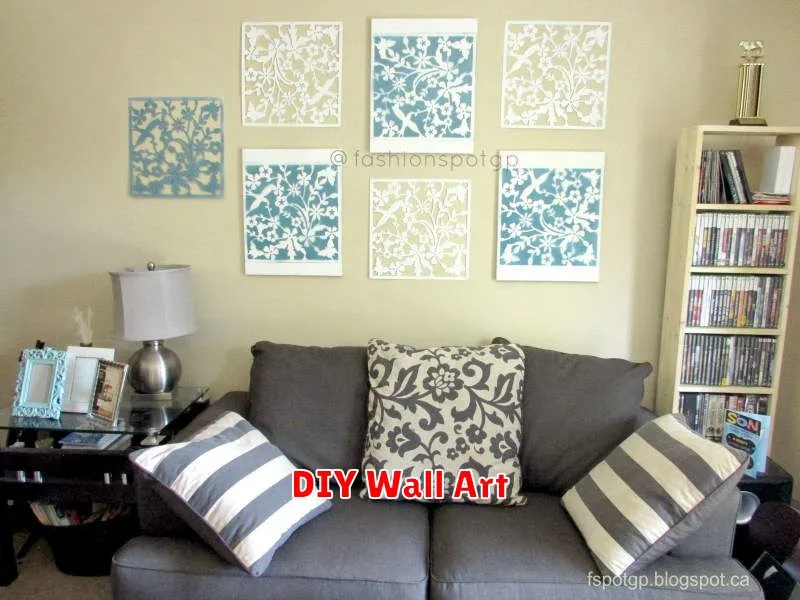
Creating DIY wall art offers a rewarding and affordable way to personalize your living space. It allows for complete creative freedom, enabling you to tailor your décor to your exact preferences and style. The process can be incredibly therapeutic, providing a satisfying sense of accomplishment upon completion.
Numerous techniques exist for crafting unique wall art. From repurposing old materials to utilizing readily available craft supplies, the options are virtually limitless. Simple projects, such as painting canvases or creating framed prints, are ideal for beginners. More experienced crafters might explore intricate techniques like decoupage or mixed media art.
Materials required vary depending on the chosen project. Common necessities include canvases, paints, brushes, frames, and various embellishments such as ribbons, buttons, or fabric scraps. Prior to starting, it’s essential to gather all necessary materials and tools to ensure a smooth workflow. Careful planning will also minimize disruptions and maximize efficiency.
The design process itself is crucial. Consider the overall aesthetic of the room and choose a design that complements the existing décor. Sketching preliminary ideas can help refine the vision and avoid costly mistakes. Remember to allow ample time for the project, particularly for more complex designs.
Once complete, displaying your DIY wall art is the final rewarding step. Consider the size, color, and style of the artwork when choosing a location. Proper lighting can significantly enhance the visual appeal of the piece. Proper hanging techniques, such as using appropriate hardware, will ensure its longevity and safety.
In conclusion, creating DIY wall art is a versatile and enjoyable endeavor. It’s an excellent way to inject personality into your home, showcase your creativity, and potentially save money compared to purchasing ready-made artwork. With a little planning and creativity, you can transform your walls into personalized masterpieces.
Inexpensive Throw Pillows
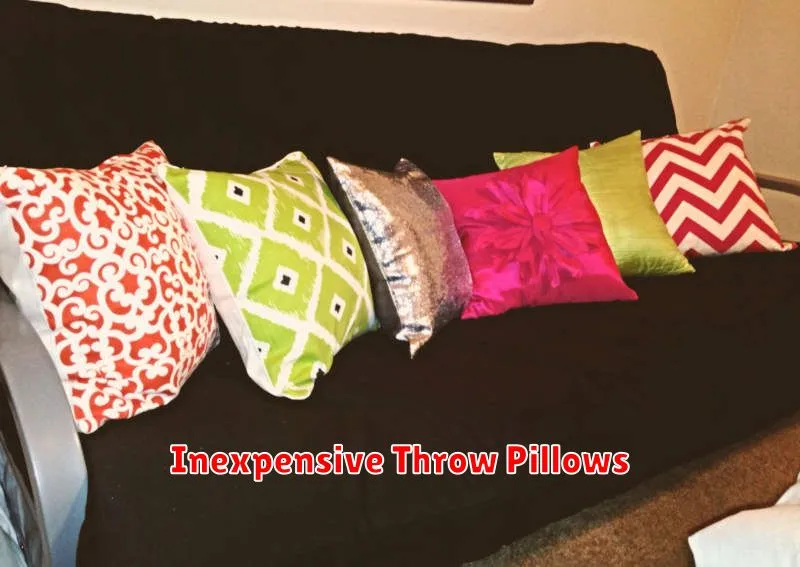
Adding throw pillows to your home décor is a simple yet effective way to refresh a room’s aesthetic. However, the cost of these seemingly insignificant items can quickly add up. Fortunately, achieving a stylish and comfortable space doesn’t require breaking the bank. There are several ways to acquire inexpensive throw pillows without compromising on quality or style.
One effective strategy is to shop during sales and clearance events. Many home goods retailers regularly offer discounts, particularly during seasonal changes or holidays. Keeping an eye out for these promotions can lead to significant savings on high-quality throw pillows. Consider subscribing to email newsletters from your favorite stores to receive notifications about upcoming sales.
Another avenue for finding affordable throw pillows is exploring discount retailers and off-price stores. These stores often carry a wide selection of home décor items at reduced prices, including throw pillows. While the selection might vary, you can frequently uncover hidden gems and unique designs at a fraction of the cost found in traditional department stores.
For those who enjoy a more hands-on approach, making your own throw pillows is a cost-effective and creatively fulfilling option. Purchasing inexpensive fabric and filling from craft stores allows for complete customization. This method offers unparalleled control over the pillow’s size, color, and pattern, enabling the creation of truly unique and personalized pieces that perfectly complement your home’s existing décor.
Finally, consider exploring online marketplaces and thrift stores. These platforms often feature gently used or even brand-new throw pillows at significantly lower prices than retail. Careful inspection is advised, but with a little patience, you can discover surprisingly high-quality inexpensive throw pillows that add a touch of elegance and comfort to your living space.
Area Rugs for a New Look
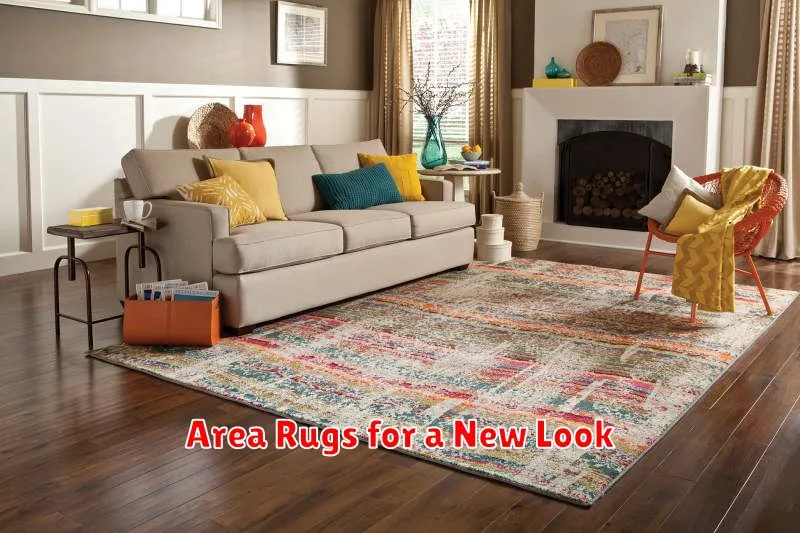
Area rugs offer a simple yet effective way to dramatically alter the aesthetic of any room. They provide a focal point, add warmth, and can instantly update a space without requiring extensive renovations.
The selection process, however, can feel overwhelming given the vast array of materials, styles, and sizes available. Consider the size and shape of your room first. A rug that’s too small will look lost, while one that’s too large can make the room feel cramped. Proportion is key.
Material is another crucial consideration. Natural fibers like wool and cotton offer a luxurious feel and durability, but require more maintenance. Synthetic materials, such as nylon and polyester, are generally more affordable and easy to clean, making them ideal for high-traffic areas or families with children and pets.
Style should complement your existing décor. A traditional room might benefit from a classic Persian rug, whereas a modern space might pair well with a minimalist geometric design. Don’t be afraid to experiment with color and texture to add personality and visual interest.
Finally, remember to consider the functionality of the rug. If placed in a high-traffic area, choose a durable material that can withstand heavy foot traffic. In a dining area, ensure the rug is large enough to accommodate chairs being pulled back without damaging the floor or rug edges. Proper underlayment is also vital for extending the life of your area rug and providing additional cushioning.
With careful planning and consideration of these factors, selecting the perfect area rug can transform your space, adding both style and comfort.
Painting Walls on a Budget
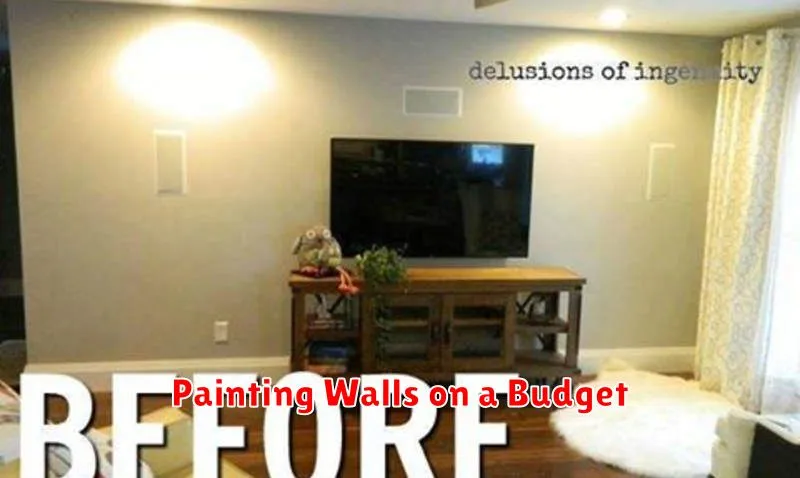
Painting your walls can dramatically transform a room, but the cost can be surprisingly high. Fortunately, with a little planning and some smart shopping, you can achieve a professional-looking finish without breaking the bank. This guide will walk you through how to paint your walls affordably.
Preparation is key to a successful and economical paint job. Start by thoroughly cleaning your walls. A simple solution of warm water and mild detergent will often suffice. This removes any dirt, grease, or cobwebs that could interfere with the paint’s adhesion. Allow the walls to dry completely before proceeding. Next, carefully repair any holes or cracks using spackle or patching compound. Sand these areas smooth once dry for a seamless finish. This step might seem minor, but it prevents imperfections from showing through your new paint.
Choosing the right paint is crucial for both cost and quality. Consider buying a high-quality paint in a smaller quantity if you have a smaller area to paint; you might save money over buying a large, more expensive bucket. Look for sales and discounts at your local hardware store. Don’t be afraid to choose a less expensive brand; many offer excellent value for money. For most interior walls, a standard matte or eggshell finish is suitable and durable.
Gathering the necessary supplies efficiently can save you money. Borrow tools from friends or family if possible, rather than purchasing new ones. You will need brushes, rollers, paint trays, drop cloths, painter’s tape (to protect trim and baseboards), and a stir stick. Cleaning your brushes and rollers thoroughly after each use extends their lifespan, saving you money in the long run.
Finally, consider the actual painting process to save money. Use a high-quality primer on particularly porous surfaces or walls with a dark color to allow less paint to be used overall. Apply thin, even coats to avoid drips and wasting paint. Two coats are usually sufficient for good coverage. Working methodically and efficiently prevents mistakes that could lead to costly re-dos.
By following these tips, you can achieve a fresh, vibrant look for your walls without overspending. Remember, a little preparation and careful planning can go a long way in creating a beautiful and affordable paint job.
Use Mirrors to Add Depth
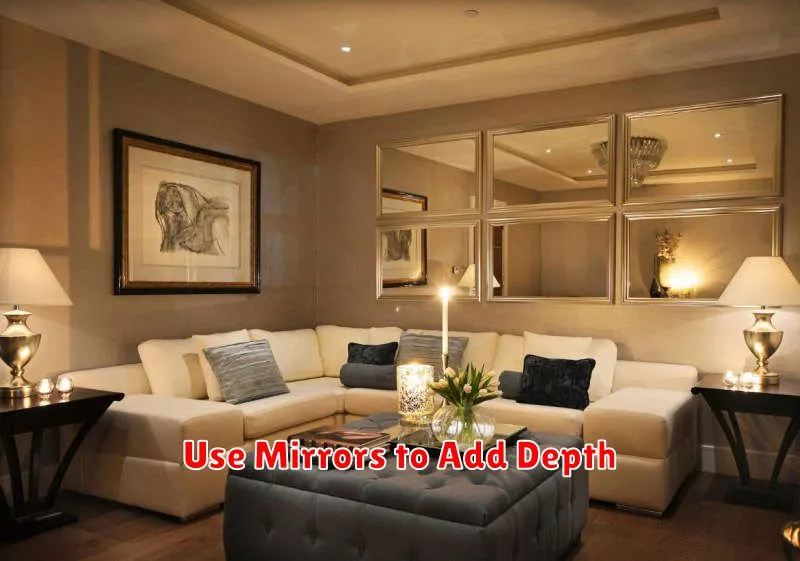
Mirrors are a fantastic way to create the illusion of more space in a room. Strategically placed mirrors can visually double the size of a room, making it feel larger and more open. Consider placing a large mirror opposite a window to reflect the outdoor view, bringing the outdoors in and expanding the sense of space.
For a more subtle effect, use smaller mirrors to accentuate architectural details or highlight interesting features. A mirror placed above a mantelpiece, for example, can reflect the fireplace and draw the eye upwards, creating a sense of height and grandeur. Experiment with different sizes and shapes to achieve the desired look.
Remember to consider the placement carefully. Avoid placing mirrors directly opposite each other, as this can create an overwhelming or dizzying effect. Instead, aim for a balanced arrangement that complements the overall design of the room. Think about reflecting light; a mirror placed near a light source can brighten a dark corner and add a feeling of airiness and brightness.
The type of frame also plays a significant role. A simple, sleek frame can create a modern, minimalist feel, while an ornate frame can add a touch of classic elegance. Choose a frame that complements the existing décor and adds to the overall aesthetic of the room. Don’t be afraid to get creative – the possibilities are endless!
Ultimately, using mirrors to add depth is a simple yet effective technique to transform a space. By carefully considering size, placement, and style, you can dramatically improve the overall feel of a room, making it appear larger, brighter, and more inviting.
Declutter for a Fresh Feel

A cluttered home can feel overwhelming and stressful. Decluttering your space can significantly improve your mood and create a more peaceful environment. It’s not about achieving a sterile, minimalist look; it’s about removing unnecessary items that weigh you down both physically and mentally. This process can be surprisingly empowering, allowing you to regain control of your surroundings.
Start small. Don’t try to tackle your entire house at once. Choose one area, like a drawer or a single shelf, and focus your efforts there. This targeted approach prevents feeling discouraged and helps you build momentum. Once you’ve successfully decluttered a small space, you’ll feel motivated to continue.
Be ruthless in your assessment of items. Ask yourself: Have I used this in the past year? Does it bring me joy? If the answer is no to both questions, it’s time to let it go. Donating or selling unwanted items is a great way to free up space and perhaps even earn a little extra cash. For items that are broken or beyond repair, proper disposal is essential.
Once you’ve removed the clutter, take some time to organize what remains. Utilize storage solutions to keep things neat and easily accessible. Proper organization makes it easier to maintain a clutter-free space in the long term. This might involve purchasing storage containers, drawer dividers, or shelving units.
Finally, remember that decluttering is an ongoing process, not a one-time event. Regularly reviewing and purging unnecessary items will help you maintain a clean and organized space. By incorporating simple decluttering habits into your routine, you’ll avoid letting clutter accumulate again.
Simple Curtains for Elegance
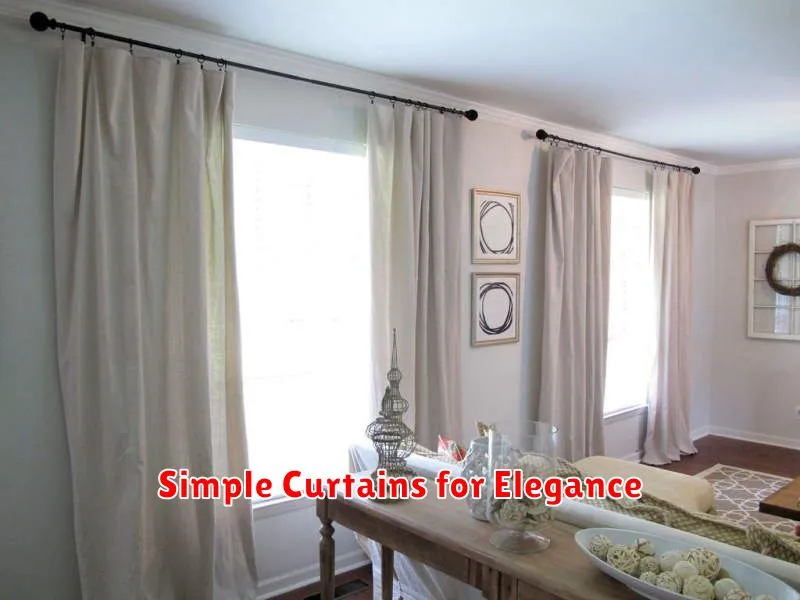
Simple curtains can add a surprising amount of elegance to any room. Often, less is more when it comes to window treatments. Overly ornate curtains can sometimes overwhelm a space, detracting from the overall design.
Fabric choice is key to achieving a simple yet elegant look. Consider lightweight, flowing fabrics like linen or cotton voile for a relaxed, airy feel. These materials drape beautifully and allow natural light to filter through, creating a soft, diffused glow. For a more formal look, a heavier weight fabric like a high-quality cotton or a subtle silk can add sophistication.
Color selection plays a vital role. Neutral colors like white, cream, beige, or gray are timeless and versatile, working seamlessly with various interior design styles. These shades create a sense of calm and spaciousness. However, don’t be afraid to incorporate a subtle pop of color, perhaps through a patterned border or a contrasting trim, to add a touch of personality without sacrificing simplicity.
The hanging method also contributes significantly to the overall aesthetic. Simple rod-pocket curtains offer a clean, uncluttered look, while grommet-top curtains provide a modern and stylish feel. Avoid overly fussy curtain tiebacks; instead, let the fabric fall naturally for an understated yet elegant drape. A minimalist approach allows the beautiful fabric and color to take center stage.
In summary, achieving elegant simplicity with curtains involves careful consideration of fabric, color, and hanging style. By focusing on high-quality materials and clean lines, you can transform your windows into a sophisticated focal point, enhancing the overall beauty and serenity of your home.
Indoor Plants for Natural Decor
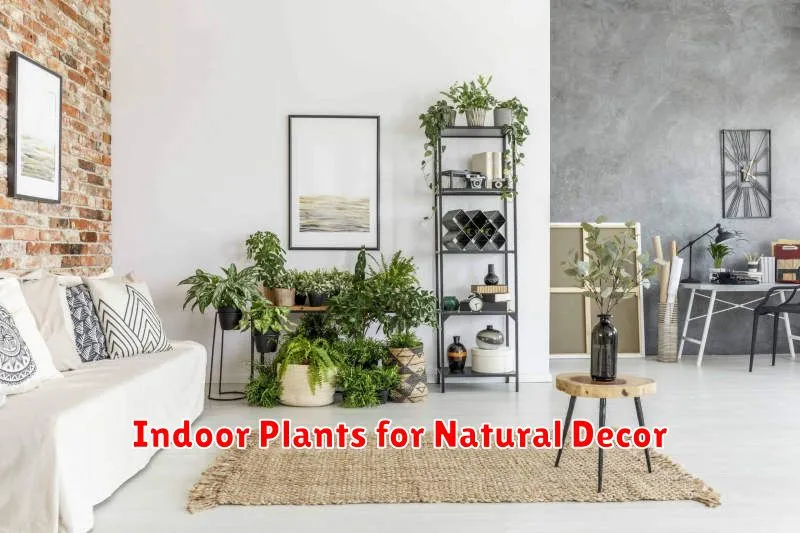
Bringing the outdoors in is a fantastic way to enhance your home’s aesthetic appeal and create a more relaxing atmosphere. Indoor plants offer a natural and vibrant touch, transforming any space with their beauty and texture.
The choice of plant depends greatly on your available light and your personal preferences. Low-light areas thrive with plants like snake plants and ZZ plants, known for their resilience and minimal care requirements. For brighter spaces, you might consider spider plants, peace lilies, or even bolder choices like monsteras.
Beyond their visual appeal, many indoor plants offer additional benefits. Some, like snake plants and spider plants, are known for their air-purifying qualities, helping to improve the air quality within your home. Others, such as peace lilies, add a touch of elegance and sophistication.
When selecting indoor plants, consider the size and shape of the pot, ensuring it complements your existing décor. A variety of pots, from ceramic to woven baskets, can enhance the overall look. Remember to choose a pot with adequate drainage to prevent root rot.
Proper care is essential for maintaining the health and vibrancy of your indoor plants. This includes regular watering, appropriate fertilizing, and occasional repotting as they grow. Research the specific needs of each plant to ensure it thrives in your home environment.
Incorporating indoor plants into your home décor is an easy and effective way to introduce a touch of nature, improve air quality, and create a more calming and welcoming space. Experiment with different types and arrangements to find the perfect fit for your style and lifestyle.
Budget-Friendly Lighting Upgrades
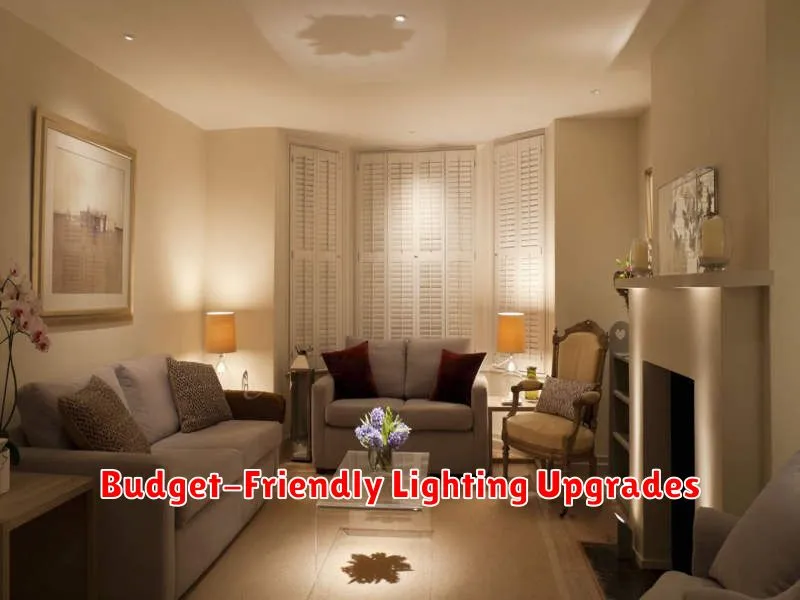
Transforming your home’s lighting doesn’t require a massive budget. With a little creativity and planning, you can achieve a significant upgrade without breaking the bank. This guide outlines simple yet effective ways to enhance your home’s ambiance and functionality through affordable lighting solutions.
One of the easiest and most impactful changes you can make is swapping out your existing light fixtures. Look for sales at home improvement stores or consider repurposing old fixtures with a fresh coat of paint or new hardware. A simple change like updating your outdated kitchen light fixture can instantly modernize the space. Consider the style of your home and choose fixtures that complement your existing décor.
Strategic use of lighting is key to creating the desired atmosphere. Instead of relying solely on overhead lighting, incorporate table lamps, floor lamps, and accent lighting to add depth and warmth. Layer your lighting to create different moods—bright for tasks and soft for relaxation. Consider using LED bulbs throughout your home; they are energy-efficient and offer a wide range of color temperatures and brightness levels.
Don’t underestimate the power of DIY projects. Creating your own pendant lights using repurposed materials or crafting unique lampshades from inexpensive fabrics can add a personal touch and save you money. Many online tutorials offer easy-to-follow instructions for various lighting DIYs. Remember to always prioritize safety when working with electricity.
Finally, consider the impact of natural light. Maximize natural light by keeping windows clean and uncluttered. Strategically placing mirrors can help reflect light and brighten darker areas. These simple adjustments can significantly reduce your reliance on artificial lighting, saving you money on your energy bill and enhancing your home’s overall brightness.

